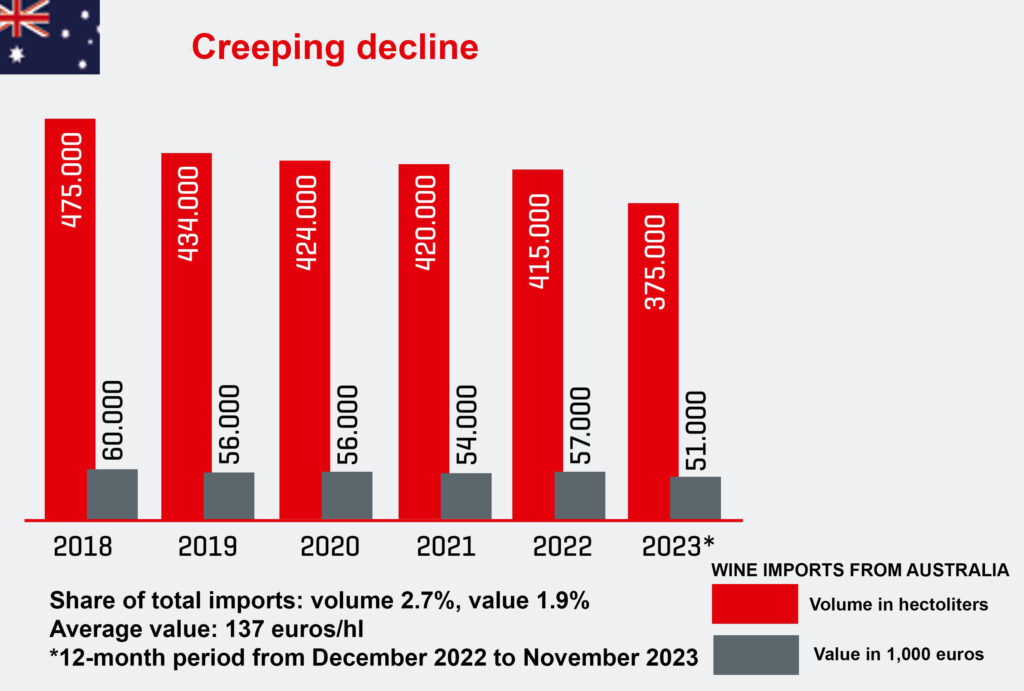
Australia is one of the world’s leading wine countries — more wine is produced Down Under than in Germany. Australian red wine in particular has gained international recognition. Around 60 percent of the wine-growing area in Australia is planted with red grape varieties. They are mainly located in vineyards in the south of the country. The states of Victoria, New South Wales and South Australia produce particularly large quantities of wine.
Most popular grape varieties and best-known wines in Australia
A little more than 40% of the wines grown are white vines- include Chardonnay, Sémillon, Sauvignon Blanc, Gewürztraminer, Riesling. The remaining almost 60% are red. Among these are in the first place Shiraz, Merlot, Cabernet Sauvignon, Pinot Noir, Tempranillo.
Most important growing areas
- South Australia: Barossa Valley Mc Laren Vale, Riverland, Coonawarra, Adalaide Hills
- Western Australia: Margret River, Swan Valley
- Victoria: Goulburn Valley, Yarra Valley, Pinisula
- New South Wales: Hunter Valley, Reverina
- Canberra: Hunter Valley, McLaren Vale
- and Tasmania.
Main transshipment points (ports)
Melbourne, Adalaide, Perth

Even Australian connoisseurs are currently unwilling to be persuaded to estimate the 2024 wine harvest, not even in terms of the trend. In some regions, the quantity of white grapes harvested appears to be lower than initially expected, and there are fears that vineyards will not be harvested for red wines due to a lack of profitability. The Australian wine industry is in a difficult situation. There are high hopes that the Chinese tariffs, which were lifted at the end of March, will provide a decisive boost. This is also necessary, as the introduction of tariffs in 2020 caused enormous problems for Australia. Australia’s wine industry has not been able to generate replacements for sales in China. This has led to the curious situation that 2023 was the smallest harvest of the century and prices still fell because winegrowers are still sitting on large stocks of red wine. The lifting of Chinese tariffs is now providing a slight boost to prices, but hardly anyone believes that exports to China will return to pre-crisis levels. It therefore remains to be seen whether the opening of the Chinese market will significantly improve the situation of the Australian wine industry. A proposal from Accolade Wines is indicative of the uncertainty. The wine giant (see p. 6) offered to pay the winegrowers of a producer association in Riverland if they agreed to cancel Accolade’s existing purchase guarantees. Equally indicative of the low level of confidence is the fact that the growers’ association rejected the proposal by a large majority. Overall, Australia’s acreage is under pressure because many winegrowers are considering the economic future of viticulture.

